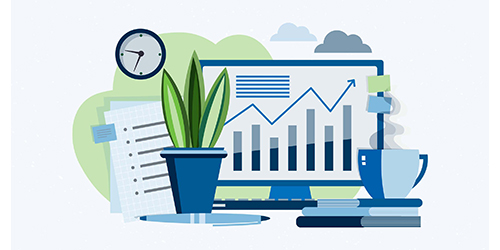Do you want to change your life for the better by having your money grow with you? When you get an early start on investing, small changes can reap big rewards.
Start now and you’ll generate compound growth, discover how to turn financial tools such as employee sponsored RRSPs to your advantage, gain wealth with cyclical growth and have a longer runway to tweak your strategy.
“Immediate benefits include getting a clear picture of where your finances currently stand, though the longer-term benefits are where it gets really exciting,” says Erin English, a Servus Financial Planner.

Why investing early and regularly is essential to success
The answer is simple: compound interest.
Sometimes referred to as interest-on-interest or income-on-income, compound interest is just that. As your investment earns interest (or income), those earnings are added to your original (or principal) investment, meaning that the next time interest is earned (often monthly), it is calculated based on your original investment plus the interest earned the previous month (and any months before that).
The earlier you start investing, the more time you'll have to take advantage of compound interest. Here’s a quick look at two investors, showing how investing early and according to plan pays off:
Investor 1:
- Started investing at: 18
- Invested: $100/month until the age of 65
- Rate of return: 4.00%
- Value at age 65: $166,545
In 47 years, the total contributions made would be $56,400, meaning their growth potential is more than $110,000.
Investor 2:
- Started investing at: 50
- Invested: $675/month until the age of 65
- Rate of return: 4.00%
- Value at age 65: $166,665
In 15 years, the total contributions made would be $121,500, meaning their growth potential is roughly $45,300.
“This is a very basic illustration that doesn’t consider, for example, investment options that are available from employers (like group RRSPs with contribution matching). With these, the whole picture changes – and for the better,” says English.
Small changes can have big impacts
“Something I highlight to my younger members is that during life things change,” says English. People change jobs, get raises and earn more money. A raise might only be 1% but consider the long-term impacts of also increasing your regular investment contributions by 1%, or, if you're carrying debts, the impact of increasing the amount you allocate to those debts by 1% as well.
“It may not seem like much in the short term, but in the long term your savings and investments will grow while your debts shrink,” says English.
Save or invest?
There's a difference between saving and investing, says English. Saving is the act of setting funds aside, for things such as vacations, large-item purchases, emergency needs, and special treats.
“I look at investing as the act of growing your savings as you need them to, so that when you are ready to make those larger purchases (or have an emergency arise) you have the funds already in place to reach those goals without impacting other areas of your life,” says English.
“So many times, we focus on one aspect of our finances but forget there are a number of other, very interrelated items that, when looked at together, can have huge impacts,” says English.
If you haven’t started investing yet or don't feel like you have enough money to invest, don't be discouraged. The best time to start is now and it's ok to start with whatever you can. Take this as your calling to reach out to a financial advisor and get started today.

